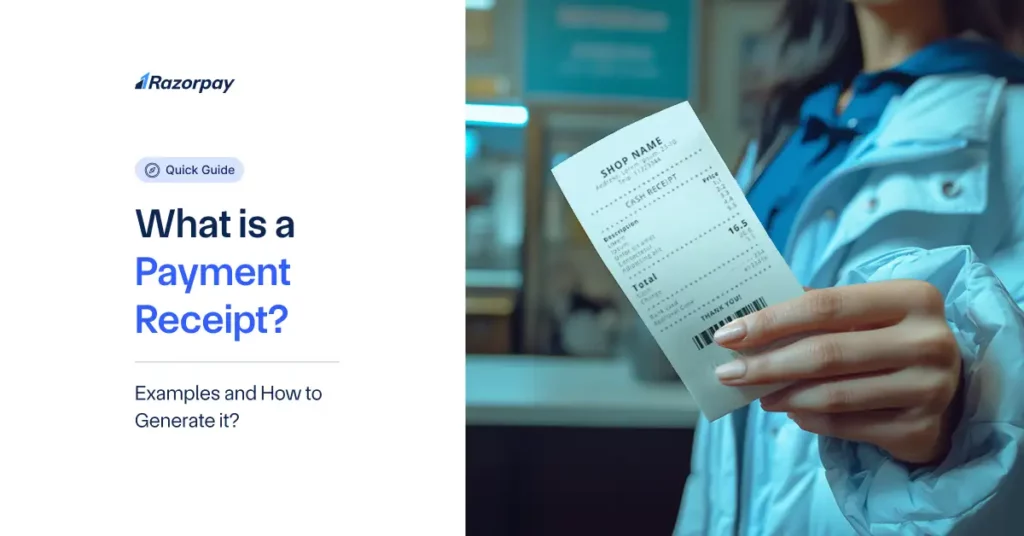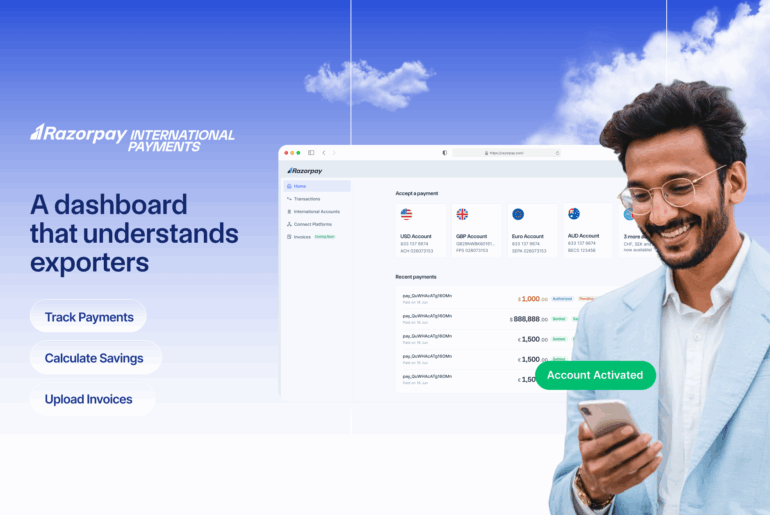A payment receipt is a crucial document that serves as proof of a financial transaction between a buyer and seller. This article delves into the meaning of a payment receipt, and its key components, and provides examples of payment receipts to help you understand their importance in record-keeping and financial management.
Table of Contents
What Is A Payment Receipt?
A payment receipt definition is a document issued by a seller to a buyer, acknowledging that a payment has been received for goods or services rendered. It acts as an official record of the transaction, including details such as the date, amount paid, and the method of payment.
The primary purpose of a payment receipt is to provide evidence that a financial transaction has taken place. For the seller, it documents the income earned, while for the buyer, it serves as proof of purchase, which can be used for accounting, tax, warranty, or return purposes.
Examples of Payment Receipt
Let’s look at a payment receipt example to understand what one typically looks like. Imagine you’re buying groceries worth ₹2,000 at your local supermarket in India. After you pay the bill via your debit card, the cashier hands you a printed receipt that looks somewhat like this:
ABC Supermarket |
|
|---|---|
|
123, XYZ Road, New Delhi |
Receipt #: 2345 |
|
Ph: 011-123456 |
Date: 15/05/2023 |
|
Time: 10:30 AM |
|
|
Items |
Amount |
|
Groceries |
₹2,000 |
|
Subtotal |
₹2,000 |
|
CGST @ 9% |
₹180 |
|
SGST @ 9% |
₹180 |
|
Total |
₹2,360 |
|
Payment Method: Debit Card xxxx7890 |
|
|
Amount Received |
₹2,360 |
This simple example covers the essential elements of a standard payment receipt:
Business name and contact details
Receipt number
Transaction date and time
Itemised goods and amounts
Total payable with taxes
Payment method
Confirmation of payment
Details may vary by business and transaction type.
What Is Included in a Payment Receipt?
A comprehensive payment receipt typically includes the following key components:
-
Business name and contact information of the seller
-
Unique receipt number or transaction ID for reference and record-keeping
-
Date the payment was received
-
Customer name and contact details
-
Itemised list of goods/services rendered with individual prices and quantities
-
Subtotal before tax
-
Applicable taxes and fees
-
Total amount paid by the customer
-
Payment method (cash, credit card, bank transfer, etc.). If paid by card, the last 4 digits of the card may be mentioned.
-
Name/signature of the person who received the payment
-
Additional notes like payment terms, return policy, or a thank you message
Based on your industry and location, some additional fields may be necessary to comply with local laws.
Payment Receipt Templates
To help you create professional payment receipts, here are five templates you can use as a starting point:
1. Basic Cash Receipt Template
|
[Business Name] |
|---|
|
[Address] |
|
Receipt #: [Number] |
|
Date: [DD/MM/YYYY] |
|
Amount Received: £[Amount] |
|
Payment Method: Cash |
|
Received by: [Name] |
2. Detailed Sales Receipt Template
|
[Business Name] |
|---|
|
[Address] |
|
[Phone] |
|
Receipt #: [Number] |
|
Date: [DD/MM/YYYY] |
|
Customer: [Name] |
|
[Item 1] |
|
[Item 2] |
|
Subtotal |
|
Tax |
|
Total |
|
Payment Method: [Cash/Card/Other] |
|
[Additional Notes] |
3. Service Receipt Template
|
[Business Name] |
|---|
|
[Address] |
|
[Phone] |
|
Receipt #: [Number] |
|
Date: [DD/MM/YYYY] |
|
Customer: [Name] |
|
Service Provided |
|
Hours Worked |
|
Hourly Rate |
|
Total |
|
Payment Method: [Cash/Card/Other] |
|
[Additional Notes] |
4. Rent Receipt Template
|
[Landlord Name] |
|---|
|
[Address] |
|
Receipt #: [Number] |
|
Date: [DD/MM/YYYY] |
|
Tenant: [Name] |
|
Property Address: [Address] |
|
Rent Period: [MM/YYYY] |
|
Rent Amount |
|
Late Fees (if applicable) |
|
Total Received |
|
Payment Method: [Cash/Cheque/Bank Transfer] |
5. Digital Receipt Template
|
[Business Name] |
|---|
|
[Address] |
|
[Phone] |
|
Receipt #: [Number] |
|
Date: [DD/MM/YYYY] |
|
Customer: [Name] |
|
[Email Address] |
|
[Item 1] |
|
[Item 2] |
|
Subtotal |
|
Tax |
|
Total |
|
Payment Method: [Credit Card/PayPal/Other] |
|
[Transaction ID] |
|
[Additional Notes] |
These templates provide a solid foundation for creating payment receipts tailored to your business needs. Remember to customise them with your brand logo, colours, and any additional information relevant to your industry.
What Is The Difference Between A Payment Receipt And A Sales Receipt?
Although payment receipts and sales receipts are often used interchangeably, there is a subtle difference between an invoice and a receipt. A payment receipt specifically acknowledges the receipt of payment, whereas a sales receipt is issued at the point of sale and serves as proof of the transaction.
Key differences:
• Purpose: A payment receipt confirms payment, while a sales receipt provides details of the sale.
• Timing: Payment receipts are issued after payment is received, whereas sales receipts are provided at the time of purchase.
• Information: Payment receipts focus on payment details, while sales receipts include itemised lists of goods or services sold.
Why Issue A Payment Receipt?
Issuing payment receipts is essential for several reasons:
1. Record-keeping:
Payment receipts help businesses maintain accurate financial records, which are crucial for accounting and tax purposes.
2. Proof of payment:
They serve as evidence that a payment has been made, protecting both the payer and payee in case of disputes.
3. Transparency:
Receipts promote transparency in business dealings, fostering trust between parties.
4. Tax compliance:
Properly documented payment receipts are necessary for claiming tax deductions and complying with tax laws.
5. Professionalism:
Providing receipts demonstrates a commitment to professionalism and adherence to standard business practices.
Conclusion
Payment receipts play a vital role in documenting financial transactions between buyers and sellers. They serve as proof of payment, help maintain accurate records, and protect both parties in case of disputes. By understanding the key components and importance of payment receipts, businesses can ensure smooth financial management and foster trust with their customers.
Frequently Asked Questions (FAQs):
1. Do You Always Issue Payment Receipts?
Yes, it is advisable to issue a payment receipt for every transaction, big or small. It helps maintain a clear record of all funds collected and avoids confusion. In some countries, issuing receipts is a legal requirement for all businesses.
2. How Do Receipts Help In Your Business?
Receipts help businesses in several ways:
-
Keeping track of income for accounting and tax purposes
-
Providing proof of payment in case of customer disputes
-
Enabling better cash flow management by tracking payment status
-
Building customer trust through transparent recordkeeping
-
Identifying revenue patterns and sales trends over time
3. Is The Payment Receipt The Same As The Invoice?
No, a payment receipt is different from an invoice. An invoice requests payment before it is made, detailing items, amounts, and terms. A receipt confirms payment has been received, referencing the invoice and including payment details.
4. Is It Mandatory To Issue A Payment Receipt?
While issuing payment receipts is not always legally mandatory, it is considered best practice for businesses to provide them to their customers. In some jurisdictions, there may be specific requirements for issuing receipts, especially for tax purposes. It is advisable to check with local authorities or consult with a tax professional to ensure compliance with applicable regulations.
5. What Is The Importance Of Payment Receipts?
Payment receipts are crucial as they provide proof of payment, ensure accurate financial records, and support tax compliance. They help customers track expenses, claim reimbursements, and foster trust between businesses and clients. Additionally, they aid businesses in monitoring cash flow and spending trends.


